[These test photos are common to the 928 review part, so you don't need to glance over them twice...]
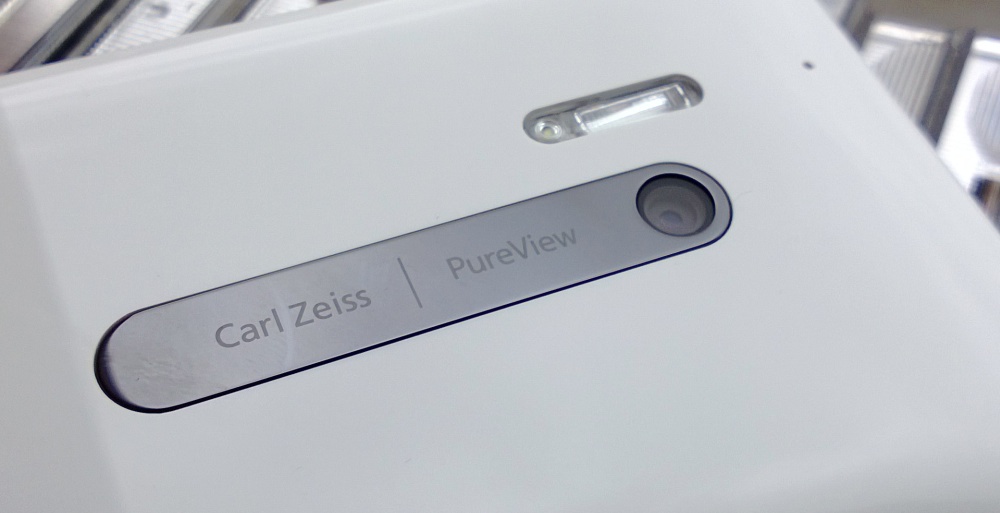
Here are a few tests to illustrate the difference Xenon can/might make, demonstrated on the Lumia 920 (first, with LED flash) and then the Lumia 928 and finally the Nokia 808 PureView (running here in 8 megapixel mode, to match the Lumias). Here's the overall scene, trying to replicate in controlled settings a typical evening 'down the pub' or 'party' shot:
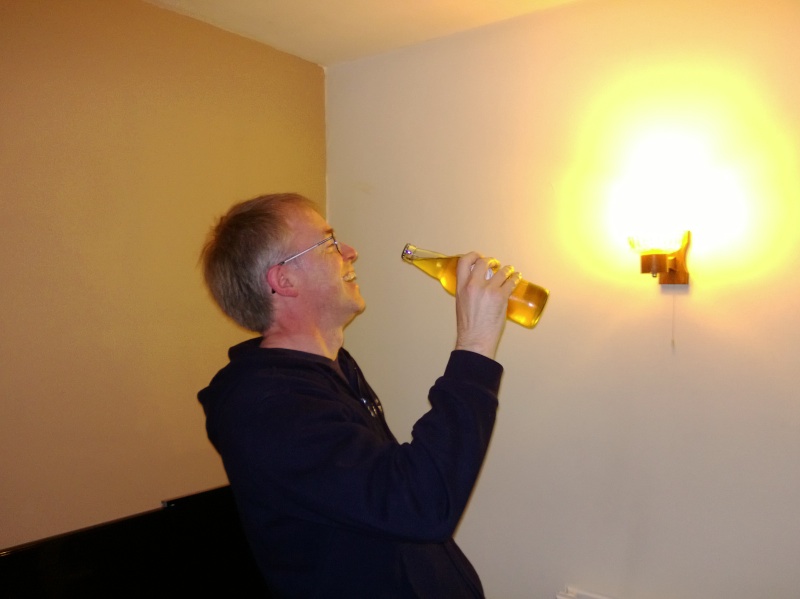
And here are crops from the 920, the 928 and the 808, stacked in that order:
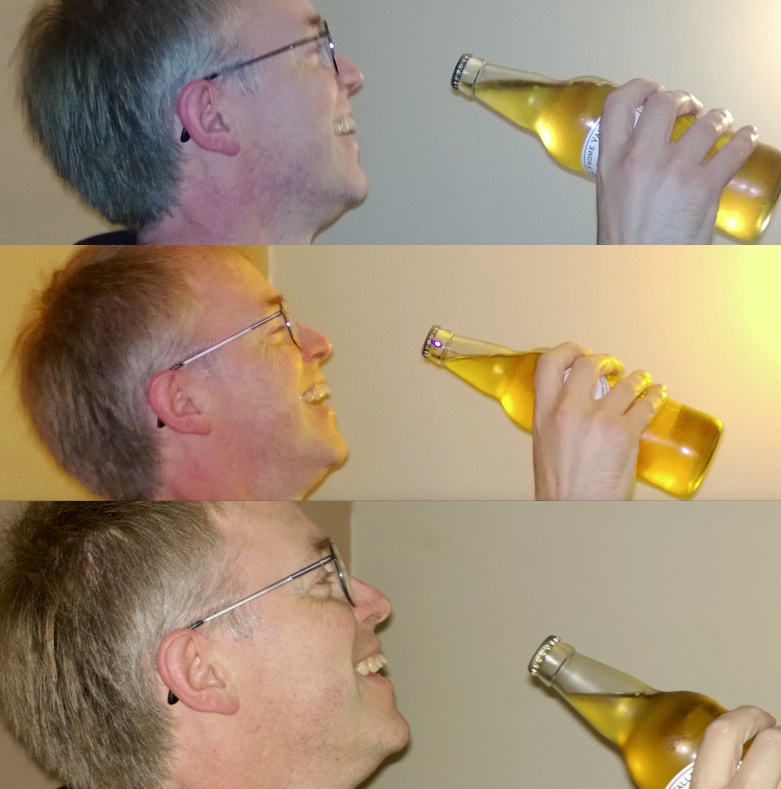
As expected, the Lumia 928's Xenon-lit image is very slightly sharper than that from the Lumia 920, but not to the extent that I'd have expected. Comparison with the bottom crop, from the Symbian-running Nokia 808 PureView, is very telling. There are multiple factors at work here:
- the 928's Xenon flash is smaller and less powerful than the 808's (plus only driven by one capacitor, rather than two)
- the sensor in the Lumia 928 is just a standard 1/3" unit, some six times smaller than that in the 808
- the Lumia 928's image processor is optimised for OIS and for low light, flash-free images (e.g. static subjects), whereas the 808 is much better optimised for Xenon flash illumination
- the Lumia 928 doesn't have the Nokia 808's mechanical shutter, which is almost essential for the ultra fast syncing with the Xenon flash pulse
In short, for typical 'people' shots, the Lumia 928's Xenon flash is only slightly better than the dual LED in the 920, in my testing. The only previous Xenon-equipped Windows Phone was the appalling HTC Mozart and the Lumia 928 produces images that are miles better than this - but, equally, a long way short of the 808's Xenon masterpieces.
In fact, the result above was so disappointing on the part of the Lumia 928 that I felt compelled to do the standard 'fan' test, to prove to myself that the Xenon flash was even working properly. For completeness, here's the full fan scene:
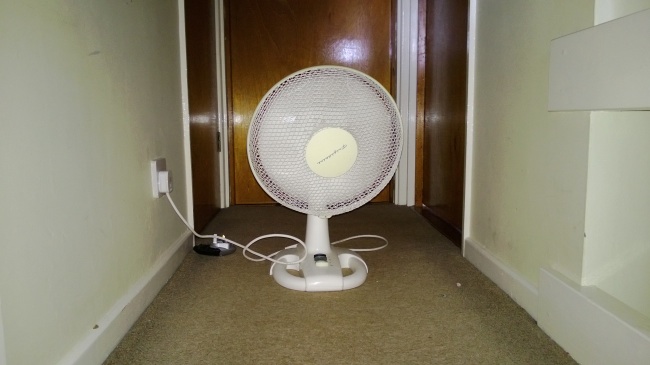
...and here are crops from the Lumia 920, 928 and 808 PureView:
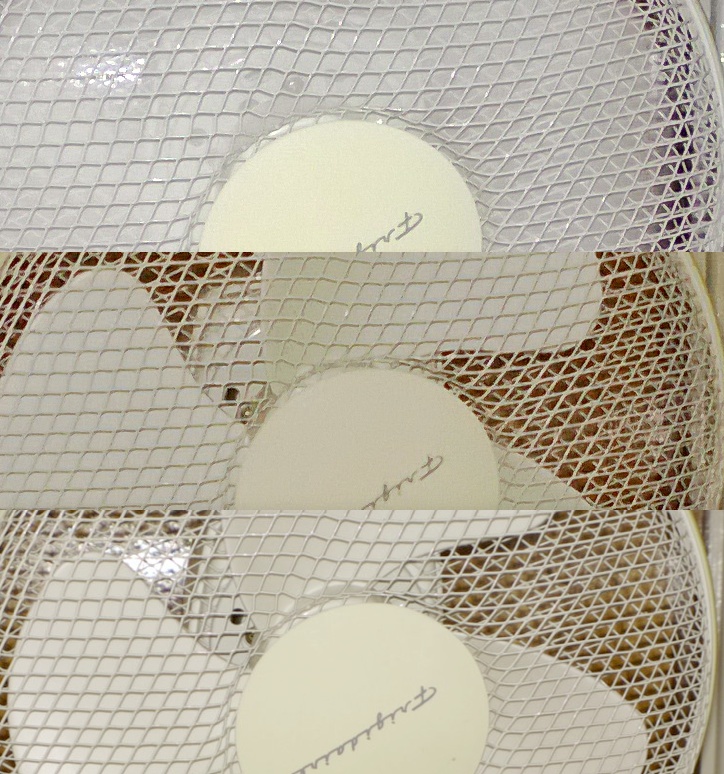
As expected, the fan blades are a total blur on the 920's photo, but nicely frozen on the 928 and 808 - phew, at least the 928's Xenon is working as advertised, even if it's not as capable down the pub as the older Symbian handset.
I was also curious as to absolute quality, under Xenon flash, for static subjects, i.e. with no chance of random errors creeping in as a result of the subject moving(!) I took this shot of my daughter's colourful nail varnish rack in a pitch dark room:
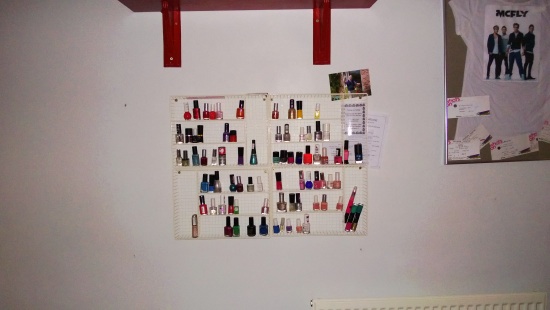
...and then cropped in so that you can see any differences in quality. Here, the Nokia Lumia 928 is the top crop and the Nokia 808 PureView the two bottom crops below (one at 1x PureView zoom and the lower one at 3x PureView), all using their Xenon flash at the same 2 metres:
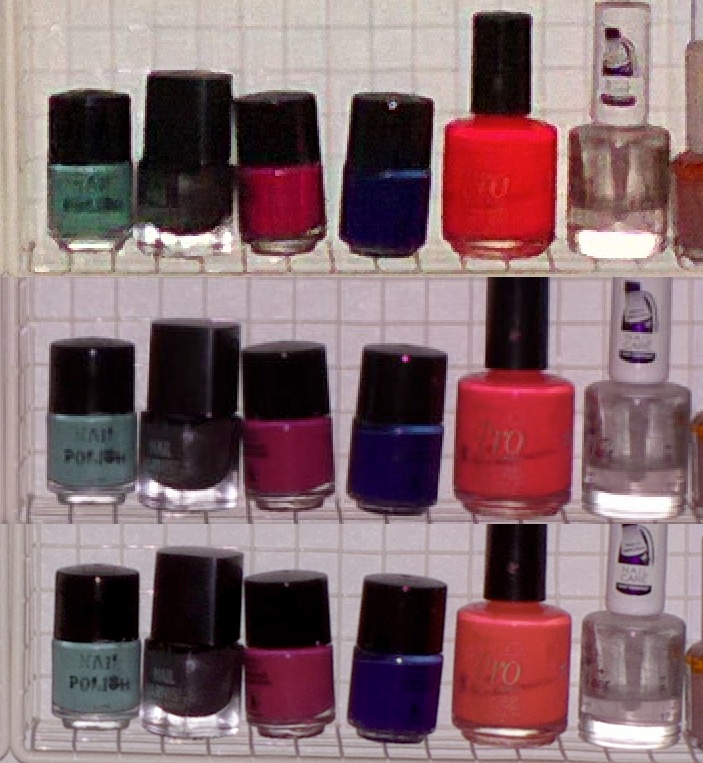
Again there's a huge quality difference between the two phone cameras. The Nokia 808 camera may not have OIS to keep it steady, but the quality of the optics and the size of the sensor make for far superior detail and absence of noise when you look closely, as I've done here.
The Lumia 928 then, isn't the Xenon-equipped Windows Phone that Nokia N8 and 808 owners might have been looking for. It's simply an LED-optimised, small sensored cameraphone that has had a small Xenon flash shoehorned in - yes, there's the usual short, bright pulse, but the lack of a mechanical shutter and the lack of Xenon optimisation means that real world results will be disappointing. Even allowing for the fact that it's a Verizon exclusive in the USA and thus not available to most of us anyway!
The rumoured 'EOS' (Lumia 1020?), on the other hand, due to be unveiled next week, promises to be the exact equivalent of the Nokia 808 PureView in the Windows Phone world. I'm expecting dual capacitor Xenon, 41 megapixel PureView phase 1 sensor, the works. Watch this space.
